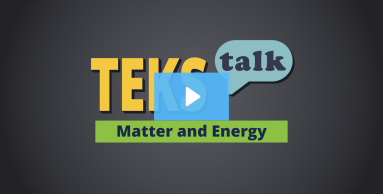
Knowledge and Skills Statement
The further explanation is designed to be a resource for educators that helps them better understand the topic their students are learning. Further explanations may be written at a more complex level than would be expected for students at the grade level.
This is students' first introduction to mixtures and solutions. A mixture is a combination of two or more different substances. At the elementary level, it is appropriate for students to consider a solution to be a special type of mixture in which at least one of the substances being mixed is a liquid. In a solution with a solid and a liquid, the pieces of a solid substance are too small to be seen when placed in a liquid. Each substance maintains its physical properties even when the pieces are so small that they can't be seen. Mixtures, including solutions, can be separated into their original components.
In Grade 5, students will describe particle behavior in solutions and use the terms solute and solvent.
Research
Flynn, Lee-Ann. “In Praise of Performance-Based Assessments.” Science and Children 45, no. 8 (April/May 2008): 32–35. https://www.proquest.com/docview/236901475?pq-origsite=gscholar&fromopenview=true&sourcetype=Scholarly%20Journals.
Summary: This teacher uses performance-based assessment to measure students understanding of solids, liquids, and mixtures. Students carry out experiments and explain what they know to show mastery. In this assessment, students explore a mixture of cornstarch and water and try to decide if it is a liquid or a solid. The teacher asks guiding questions to help them determine the state of the mixture. The class then adds oil to their mixture and compares it to their previous mixture of cornstarch and water to see how it has changed.

